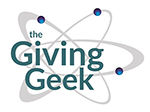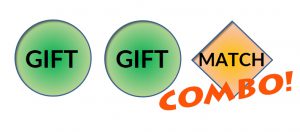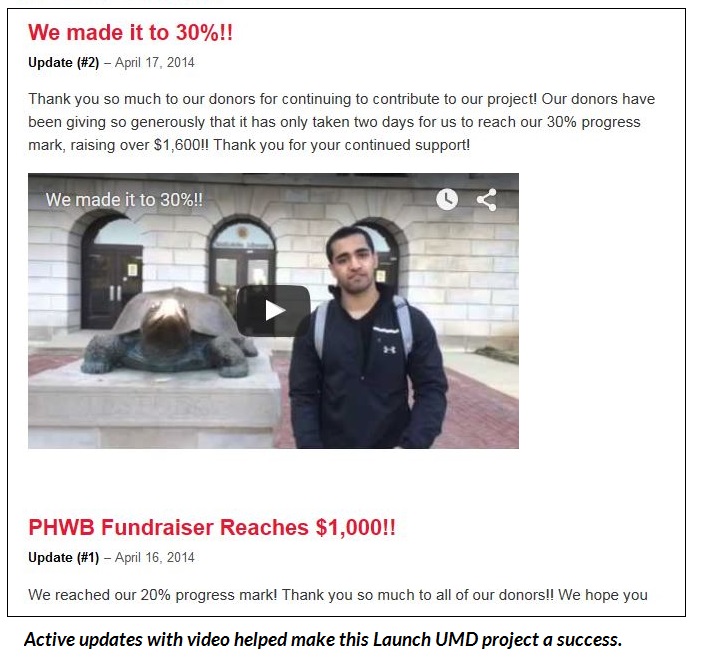fundraising
How to Candy Crush Your Fundraising

Why do mobile games keep people hooked? As this super geeky and great video at Game Theory explains, it’s all about the “hedonic treadmill” – central to the dopamine response cycle of all enthralling and addicting activities. Mobile games that have hit it big play on some of these central human behavior mechanisms. Then, they amplify their engagement by being portable, friction-free to start and socially-enabled. While annual giving is probably not going to change to daily giving, we can learn a few things about how to engage 21st century donors from the success of these games.
Go Mobile
Apps and games excel because they are easy to access and made for mobile devices. Your fund pages, giving emails, and giving portals all need to be optimized for mobile, because 50% or more of your donors are likely to view them on mobile devices. A simple test is just to break out your phone when you send test emails and ask: This looks good on my monitor, but what does it look like on my phone? This also means thinking hard about what exactly you need on your giving page to accept a gift, because extra fields are going to turn off a mobile giver. Reducing friction is a key part of engaging 21st century donors.
We’ve had our ups and downs with text to give, and the Facebook “Donate Now” button is still in its infancy. But we’re also seeing more organizations experiment with text and social media reminders about campaign deadlines and challenges.
Get Social
How many invites to play a mobile game have you received on Facebook? Learn from this. If you don’t have a social sharing option for every gift that comes into your organization, you need to implement one—now. It’s not just young donors anymore who are sharing. Not everyone is going to do it, but the option to connect giving to a social network is a key part of 21st century philanthropy. Donors want the option to share, and when they do, you are going to find new donors that you didn’t even know were interested. If you don’t have it up and running, start talking on your campus and with your IT, gift processing and CRM providers about how to make it happen.
An increasing number of organizations are also engaging donors directly on social media to thank them for gifts. Ask donors if you can do this: offer a field for their Twitter handle or ask if you can post to their Facebook wall that they donated. It may be social media gold for your organization.
Active Feedback
Too often, our giving programs provide the same response to everyone, regardless of their background, giving method, or even what they’ve supported. We don’t send customized “push” notifications like apps and games do—we send mass emails on a set schedule. While we could never be completely like a mobile game or really want to, there are some things we can learn from the active feedback the best games provide.
For example, a donor match campaign or a corporate matching gift is really like a powerful “combo” move for a donor and should be described that way. Too often, donors miss these opportunities to double or even triple their impact. Feature opportunities to amplify gifts through matching to donors who work for matching companies so they get in the combo game. You can do the same with a message to share the campaign via email—power up your gift by getting a friend to join in.
This is going to take leveraging your data, but you are collecting it during calls, from previous gifts and in your data enrichment process. Use it to personalize and “push” personalized messages more often to donors.
 Build it together
Build it together
Feedback also involves showing donors what they are helping build incrementally. We often talk about what an annual fund supports in total, but maybe we could be a little more like Farmville and have the annual fund or campaign grow in impact as gifts come in. Great crowdfunding campaigns accomplish this with daily updates by project owners and this is one reason why they see additional gifts and significant social sharing by contributors.
The “project”—which might be the whole annual fund or building campaign—has to be something alive and impacting real people. Today we built the first floor, tomorrow, we fund the computers…Talk to donors like you are building something together.
The Leader Board
This is where mobile games really shine—incremental achievements based on what players do in the game. We’ve had these for years in philanthropy, and we’ve called them giving societies. It’s time to diversify giving societies and make sure they are online and immediate. Consecutive year giving societies and lifetime giving milestones are great to have on your web site and to update them not just at the end of the fiscal year, but if you can do it, weekly. It takes a lot of work, but this is the sort of active feedback that donors crave.
It might also be about keeping the company of other leaders. The University of Maryland had incredible success this past year, capturing 7,000 new donors through an all-out outreach effort that included expansion of phone, electronic, mail, and crowdfunding channels. They also really benefited from a record-breaking $31 million donation from Brendan Iribe, the alumnus founder of Oculus VR, which fueled great excitement. Alumni and friends wanted to join that kind of excitement.
Get In the Game
If you can get mobile, social, and actively show donors what they are building with their gifts as well as how they are building their personal giving history, you just might be able to steal a little of the psychology that’s Crushing all that Candy every day on cell phones and tablets all over the world.
And your donor base will be ready to hit the next level.
This post is part three of a series called “Fundraise Like a Kid”. Check out the other posts here:
And join me in January at the CASE VI conference in Kansas City for a presentation with Michael Greenberg of ScaleFunder and Sara Wald from North Dakota State University on how to apply these “childish” tactics to your giving program—and get more donors.



